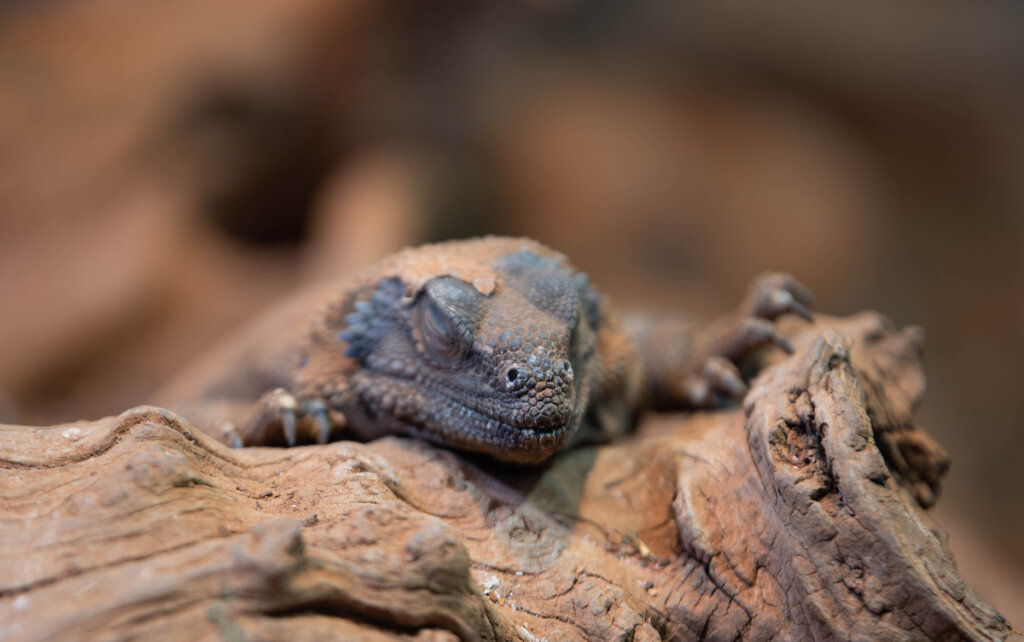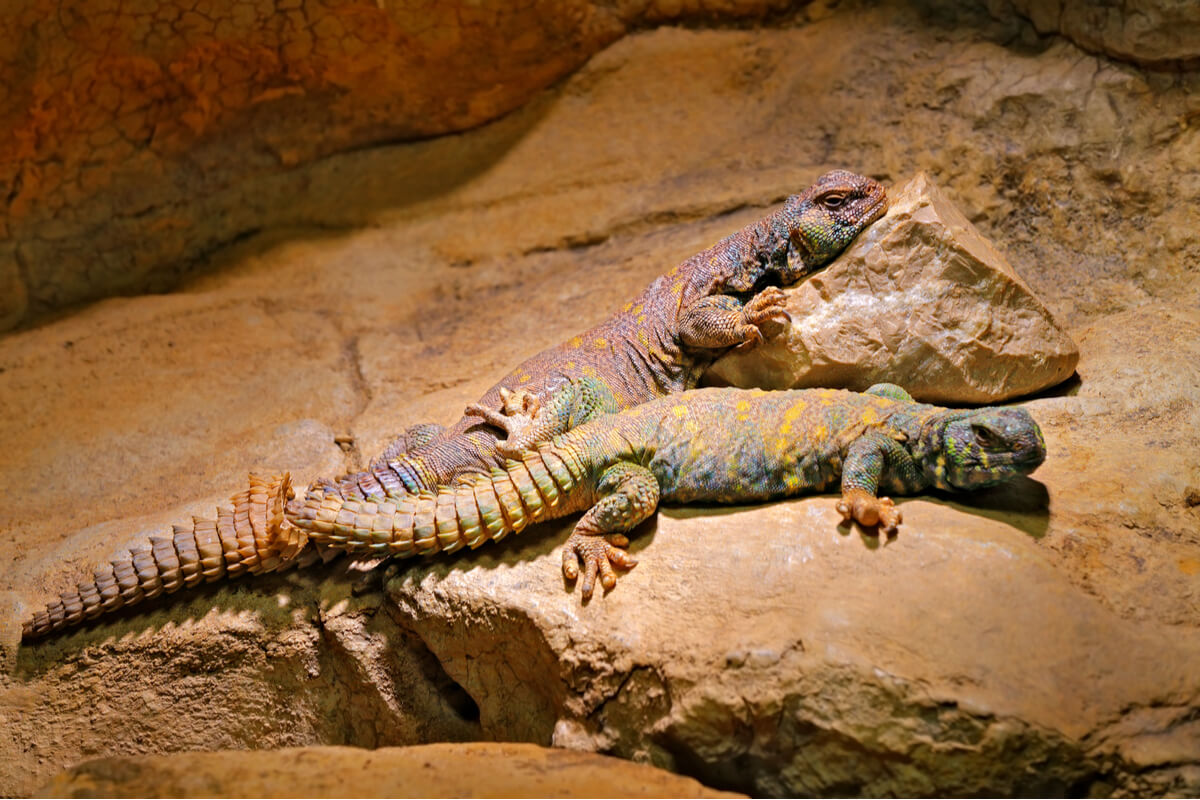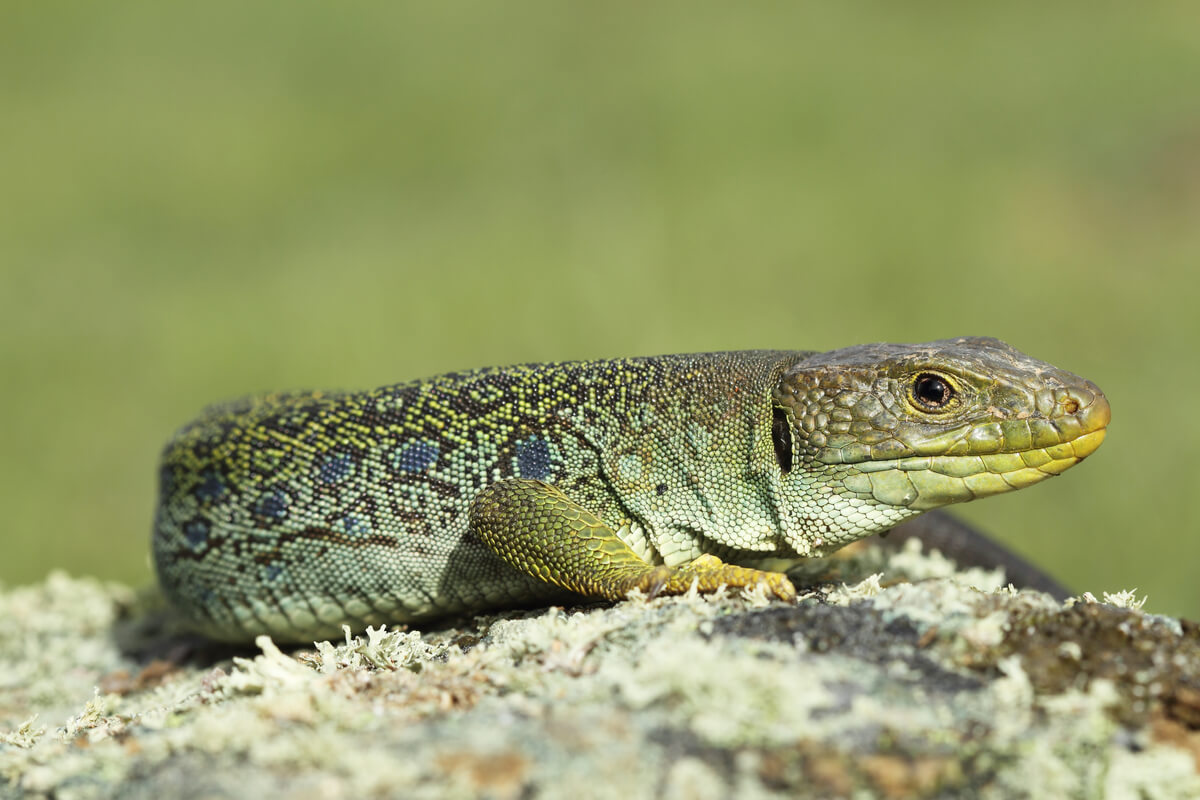Thermoregulation: How Do Reptiles Regulate Their Temperature?

Thermoregulation in reptiles is the behavioral tool with which these animals maintain their body temperature as stable as possible. Unlike other living things, reptiles are dependent on environmental temperature, so they have strategies to take advantage of it.
The biological processes that these animals carry out to maintain their temperature within the optimal range are the result of behavioral and chemical changes. However, as it’s completely dependent on the environment, it’s normal for this type of animal to not be present in certain regions of the planet – such as the polar areas.
In the same way, the application of heat sources in the habitat of these animals is necessary when they’re kept as pets, as they require a thermal gradient. This is because they’re not able to generate heat by themselves. Here’s more on how reptiles keep their body temperatures under control.
The importance of thermoregulation
The tropical, subtropical, and temperate regions of the planet are home to a great diversity of reptile species. This is because, in these places, most of the time the ambient temperature is within acceptable ranges.
Like all vertebrate animals and many invertebrates, reptiles need thermoregulation so that their bodies’ natural biological processes continue to function. When the temperature gets too low or too high, the proteins can lose their qualities, which would either end the life of the animal, or cause it very serious consequences.
Unlike mammals and birds, which are endothermic animals, reptiles are ectothermic and can’t produce heat through internal chemical reactions. Therefore, they’re totally dependent on environmental conditions to be able to modulate their metabolic rate.
One of the advantages of thermoregulation in reptiles is that these animals don’t need to eat to maintain their temperature, so all the energy they acquire from food is used for growth. Mammals, for example, must feed to maintain a constant body temperature.
The metabolic rate of a mammal is much higher than that of a reptile.

Thermoregulation in reptiles
The body temperature in reptiles can vary temporarily between individuals, depending on whether it’s day or night and within the different seasons of the year. In addition, these vertebrates often become inactive when, due to the environment, it’s impossible to reach their ideal body temperature.
Daily and seasonal fluctuations in temperature have consequences on the behavior and biology of the species. As in the rest of vertebrates, the metabolism of reptiles is controlled by the circadian cycle , which involves a set of tissues and hormones.
Temperature-related behavioral changes in reptiles are driven by hormones, specifically melatonin. This is produced by the pineal gland and interacts with the thyroid gland, to directly influence the secretion of hormones by the latter and thus increase or reduce activity.
Like melatonin, prostaglandins play an important role in the thermoregulation of reptiles. Behavior is affected by cardiovascular responses, for example heart rate. This, in turn, is influenced by the concentration of prostaglandins.
When a reptile needs to raise its body temperature, it will lie in the sun or seek another source of radiant heat. At that point, the prostaglandins begin to concentrate and increase the heart rate. The heart will move blood faster to warm the body more effectively.
In this way, reptiles seek the sun or hot areas to increase body temperature. When they need to decrease it, they will bury themselves, plunge into water, or seek good shade.
Maintaining the temperature in a reptile terrarium
In nature, animals learn how to act to survive. Reptiles, in addition, must know how to change their behavior when seeking heat or fleeing from it. However, when an animal lives in a domestic facility, it cannot carry out all of these natural behaviors.
For this reason, people who have reptiles as pets place one or more heaters in the terrariums, which can be of different types. For example, heat lamps or heat-producing stones. When placing the heater, it’s important that it’s placed in a single place, to allow the animal to get as far away as possible from it when needed.
Another thing to keep in mind with regard to heaters is that they can seriously burn pets’ skin. Therefore, it’s a good idea to protect these gadgets with metal mesh or glass, to avoid mishaps and constantly regulate the temperature they produce.
The term ‘cold blood’ can cause many people to make the mistake of overheating their pets. Although reptiles need to take the heat from the environment, it’s also true that it’s difficult for them to lose it later.

Every ectotherm pet must be observed with a critical eye, in order to detect when it’s hot and when it’s cold. It may seem tedious, but as we already said, reptiles are animals that exclusively show this need for thermoregulation through behavior.
All cited sources were thoroughly reviewed by our team to ensure their quality, reliability, currency, and validity. The bibliography of this article was considered reliable and of academic or scientific accuracy.
- Bogert, C. M. (1949). Thermoregulation in reptiles, a factor in evolution. Evolution, 3(3), 195-211.
- Cordero, G. A., Telemeco, R. S., & Gangloff, E. J. (2018). Reptile embryos are not capable of behavioral thermoregulation in the egg. Evolution & development, 20(1), 40-47.
- Seebacher, F., & Franklin, C. E. (2003). Prostaglandins are important in thermoregulation of a reptile (Pogona vitticeps). Proceedings of the Royal Society of London. Series B: Biological Sciences, 270(suppl_1), S50-S53.
- Seebacher, F., & Franklin, C. E. (2005). Physiological mechanisms of thermoregulation in reptiles: a review. Journal of Comparative Physiology B, 175(8), 533-541.
